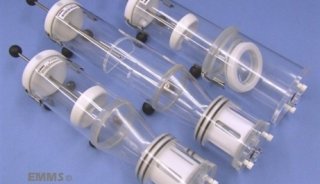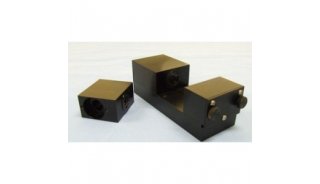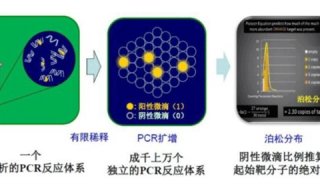Methylation Specific PCR
Methylation Specific PCR
Protocol written by James Herman*
Methylation Specific PCR (MSP) is a simple rapid and inexpensive method to determine the methylation status of CpG islands. This approach allows the determination of methylation patterns from very small samples of DNA, including those obtained from paraffin-embedded samples, and can be used in the study of abnormally methylated CpG islands in neoplasia, in studies of imprinted genes, and in studies of human tumors for clonality by studying genes inactivated on the X chromosome.
MSP utilizes the sequence differences between methylated alleles and unmethylated alleles which occur after sodium bisulfite treatment. The frequency of CpG sites in CpG facilitate this sequence difference. Primers for a given locus are designed which distinguish methylated from unmethylated DNA in bisulfite-modified DNA. Since the distinction is part of the PCR amplification, extraordinary sensitivity, typically to the detection of 0.1% of alleles can be achieved, while maintaining specificity. Results are obtained immediately following PCR amplification and gel electrophoresis, without the need for further restriction or sequencing analysis. MSP also allows the analysis of very small samples, including paraffin-embedded and microdissected samples.
BASIC PROTOCOL
DNA is modified by sodium bisulfite treatment converting unmethylated, but not methylated, cytosines to uracil. Following removal of bisulfite and completion of the chemical conversion, this modified DNA is used as a template for PCR. Two PCR reactions are performed for each DNA sample, one specific for DNA originally methylated for the gene of interest, and one specific for DNA originally unmethylated. PCR products are separated on 6-8% non-denaturing polyacrylamide gels and the bands are visualized by staining with ethidium bromide. The presence of a band of the appropriate molecular weight indicates the presence of unmethylated, and/or methylated alleles, in the original sample.
Prepare the PCR mixes
Thaw 10x PCR buffer, NTP’s and primers. Determine the number of samples to be analyzed, including a positive control for both the unmethylated and methylated reactions, and a water control. Make a master mix for each PCR reaction (methylated and unmethylated). For each 50 祃 reaction, the following amounts should be used:
10x PCR buffer: 5 礚
25mM 4 NTP mix 2.5 礚
Sense primer (300ng/礚) 1 礚
Antisense primer (300ng/礚) 1 礚
Distilled, sterile water 28.5 礚
We use a specific PCR buffer that provides specific and high efficiency amplification, but it has relative high magnesium and nucleotide concentrations. Other PCR buffers have been used with success as well.
Aliquot 38 祃 of this PCR mix into separate PCR tubes (0.5 mL tubes or strips) labeled for each sample. Assure that the components are well mixed prior to aliquoting.
Add 2 祃 of bisulfite modified DNA template to each tube. Be sure to have an unmethylated and methylated reaction for each sample, and to have the positive controls, as well as a no DNA control.
Add 1-2 drops of mineral oil (~25-50 祃) to each tube, and place in thermocycler. Be sure the mineral oil completely covers the surface of the reaction mixture to prevent evaporation. If the thermal cycler has a heated lid to prevent condensation, mineral oil may not be necessary, but longer run times are typical.
Amplify the PCR products in the thermal cycler
Initiate the PCR with a 5 minute denaturation at 95 C.
Add Taq polymerase after initial denaturation. 1.25 units of Taq polymerase, diluted into 10 祃 of sterile distilled water. Mix this 10 祃 into the 40 祃 through the oil by gently by pipetting up and down. Other methods of hot-start PCR may be more convenient.
Continue amplification with the following parameters (35 cycles are usually enough):
30 sec 95 C (denaturation)
30 sec specific for primer (annealing)
30 sec 72 C (elongation)
Final step: 4 min 72 C (elongation)
Store at 4 C until analysis.
Analyze the PCR products by gel electrophoresis
Prepare 6-8% non-denaturing polyacrylamide gels. 1X TBE provides better buffering capacity and sharper bands for resolving these products. The size of the products typically generated by MSP analysis is in the 80-200 bp range, making acrylamide gels optimal for resolution of size. High percentage horizontal agarose gels can be used as an alternative.
Run reactions from each sample together to allow for direct comparison between unmethylated and methylated alleles. Include positive and negative controls.
Vertical gels can be run at 10 V/cm for 1-2 hours.
Stain the gel in ethidium bromide, and visualize under UV illumination.
CRITICAL PARAMETERS
The most critical parameter affecting the specificity of methylation-specific PCR is determined by primer design. Because of the modification of DNA by bisulfite, the two daughter strands of any given gene are no longer complementary after treatment. Either strand can serve as the template for subsequent PCR amplification, and the methylation pattern of each strand could then be determined. In practice, it is often easiest to deal with only one strand, most commonly the sense strand. Primers should be designed to amplify a region that is 80-250 bp in length, and should incorporate enough cytosines in the original sequence to assure that unmodified DNA will not serve as a template for the primers. In addition, the number and position of cytosines within the CpG dinucleotide determines the specificity of the primers for methylated or unmethylated templates. Typically, 1-3 CpG sites are included in each primer, and concentrated in the 3’ region of each primer. This provides optimal specificity and minimizes false positives due to mispriming. To facilitate simultaneous analysis of the U and M reactions of a given gene in the same thermocycler, we adjust the length of the primers to give nearly equal melting/annealing temperatures. This usually results in the U product being a few base pairs larger than the M product, which provides a convenient way to recognize each lane after electrophoresis. Since methylation specific PCR utilizes specific primer recognition to discriminate between methylated and unmethylated alleles, stringent conditions must be maintained for amplification. This means that annealing temperatures should be at the maximum temperature which allows annealing and subsequent amplification. In practice, we typically test newly designed primers with an initial annealing temperature 5-8 degrees below the calculated melting temperature. Non-specificity can be remedied by slight increases in annealing temp, while lack or weak PCR products may be improved by a drop in temperature of 1-3 degrees C. As with all PCR protocols, great care must be taken to ensure that the template DNAs and reagents do not become contaminated with exogenous DNAs or PCR products.
* For more details, please see
Herman JG and Baylin SB, Methylation Specific PCR, in Current Protocols in Human Genetics, 1998.





















